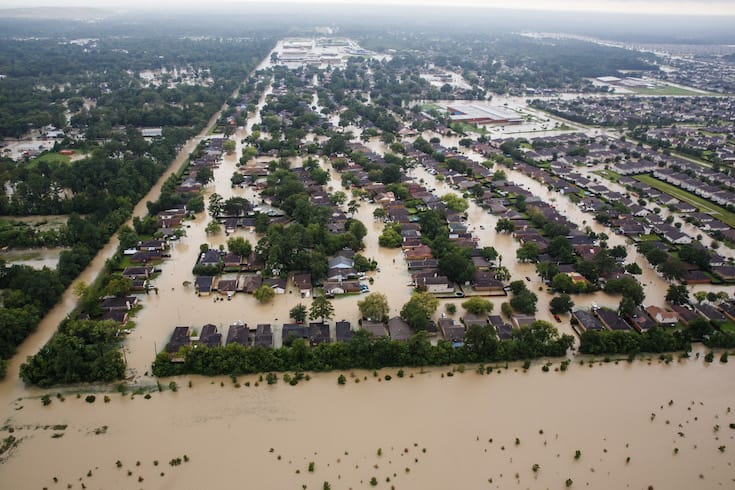From severe spring storms to record summer heat, each season brings with it extreme weather events that are becoming more frequent and intense due to climate change. By understanding the climate connection, reporters can make crucial links between extreme weather events and human-caused climate change for their audiences.
This guide summarizes what emerging climate research says about summer’s extreme weather, including heat waves, hurricanes, flooding, and wildfires. Included in this guide are examples of vetted language produced in conjunction with Climate Central, a scientific organization that studies and reports on climate change.
Extreme Heat
Earth is becoming hotter for everyone, everywhere. Billions of people around the world are suffering from increasingly dangerous and more frequent heat waves driven by fossil fuel pollution which adds heat-trapping gases to our atmosphere.
Heat is responsible for more deaths than any other weather event, killing more people than hurricanes/tropical cyclones, floods, and tornadoes. It’s imperative that journalists make this life-saving connection for audiences. According to the UN, extreme heat has killed nearly half a million people each year since 2000, about 30 times more than tropical cyclones. In the US, more than 21,000 people have died from heat since 1999.
It’s more than just a public health issue, it’s a matter of justice for more vulnerable groups, including people with disabilities, older adults, children, pregnant people, people who are unhoused or incarcerated, and outdoor workers.
Language you can use to make the climate connection: Every heatwave in the world is now made stronger and more likely to happen because of human-caused climate change.
Hurricanes
Tropical systems “feed” off warm ocean water and with nearly 90% of Earth’s excess heat being absorbed by oceans, climate change is supercharging these storms. Climate research has shown that tropical cyclones in all ocean basins are becoming more intense — with stronger winds, heavier rain, and higher storm surge. Often, this boost in intensity occurs rapidly, providing far less warning for emergency preparations, especially if it occurs immediately prior to landfall.
While stronger hurricanes/tropical systems have become more frequent over the past several decades, the overall number of tropical cyclones per year has not changed significantly.
Language you can use to make the climate connection: The research is clear that climate change supercharges hurricanes: increasing their intensity, rain rate, and storm surge.
Flooding
As one of the deadliest natural disasters, second only to extreme heat, floods destroy communities, disrupt livelihoods, and increase the risk of pest and waterborne illnesses. The climate connection here is much simpler, and is grounded in physics: A warmer atmosphere can hold more moisture, fueling heavier downpours.
While flooding is influenced by other non-meteorological factors such as land-use and flood defense strategies, data shows that heavy rainfall has become more frequent and intense across most of the world since the 1950s. Research shows that with continued warming, precipitation extremes are likely to increase across the world, even in regions with decreasing average precipitation.
Language you can use to make the climate connection: As our climate warms, the most extreme rainfall events have become more frequent and intense across much of the world.
Wildfires
The threat and overall length of wildfire season is increasing, driven by changes to global temperature and precipitation trends. Climate change is amplifying these risk factors, with climate research highlighting rapid swings from very wet to very dry conditions contributing to the destructive wildfires in Los Angeles (among others across the world.)
As temperatures rise and our atmosphere gets “thirstier,” trees, shrubs, grasses, and other ground vegetation become drier and more flammable — increasing the threat of ignition and enhancing the spread of existing fires. Extended periods of drought, expected to become more frequent and intense as our planet warms, only exacerbate these risks further.
Language you can use to make the climate connection: Climate change is creating conditions for more frequent, larger, and more dangerous fires to form and spread as temperatures rise and rainfall patterns become more erratic.
